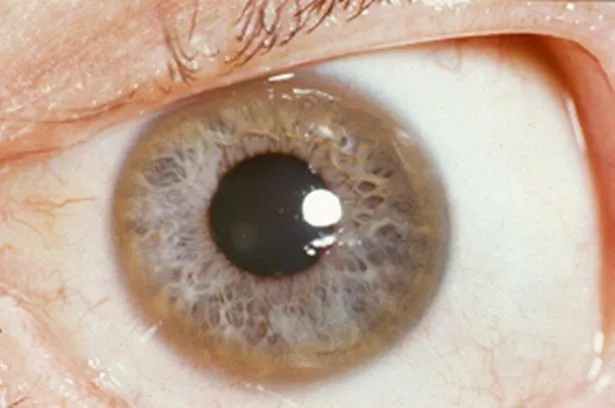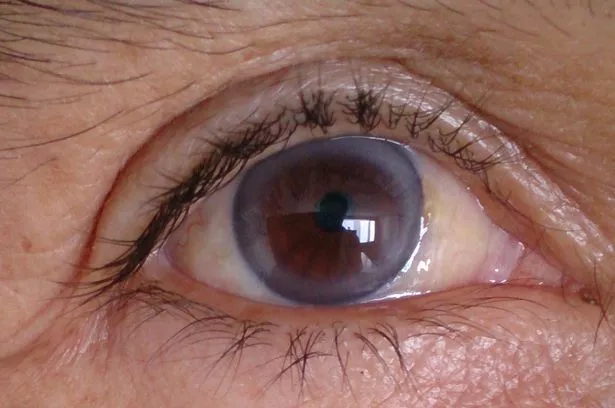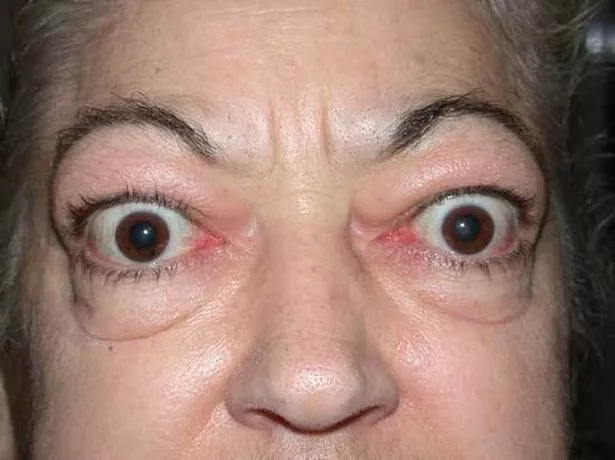It’s true that eyes can reveal a lot about a person’s physical health. Even a brief look can communicate much, and medically trained professionals can detect signs of cholesterol levels, thyroid problems, and other issues by examining a patient’s eyes. An unusual bulge or an oddly colored ring around the iris could indicate a serious medical problem.
While these eye issues may seem unrelated to other parts of your body, they can reflect problems elsewhere. For instance, jaundice can turn the whites of your eyes yellow due to liver issues. Noticing changes in your eyes can help you and your doctor identify potential health issues early.
Fortunately, many of these conditions are rare and unlikely to affect most people. However, if you observe any unusual changes in your eyes, it’s advisable to consult your GP and consider further medical evaluations.
3. Kayser-Fleischer ring

If you notice a rusty yellow-brown ring around your iris, it could indicate Wilson’s disease (WD), a rare genetic disorder characterized by the dangerous accumulation of copper in the body. This condition causes copper to build up in various organs, including the eyes, leading to the formation of a Kayser-Fleischer ring. Initially appearing as a yellow to green line near the top of the iris, it may eventually develop into a complete ring. WD primarily affects the liver and brain, often causing symptoms such as abdominal swelling, jaundice, and changes in personality.
While this condition can develop at any age, it is most commonly observed in individuals aged 3 to 50. Diagnosis typically involves liver testing and an examination by an ophthalmologist. If you experience any of these symptoms, it is essential to seek medical attention promptly for accurate diagnosis and appropriate treatment.
According to the British Liver Trust, a characteristic clinical sign of Wilson’s disease is the presence of a rusty or coppery brown ring around the eye, known as a Kayser-Fleischer ring or K-F ring. However, this ring is typically not visible to the naked eye in most cases.
Approximately 50% of individuals with Wilson’s disease display these rings. As part of the diagnostic process for this condition, an ophthalmologist performs a slit-lamp eye examination to detect Kayser-Fleischer rings.
This specialized test involves using a slit-lamp microscope with a concentrated beam of light to closely examine the cornea. If there is suspicion of Wilson’s disease, it is recommended to seek medical advice and undergo appropriate testing for accurate diagnosis and treatment.
2. Corneal arcus

In middle-aged and older individuals, a blue ring around the iris may indicate a genetic cholesterol condition known as corneal arcus. This can be a sign of familial hypercholesterolaemia, a genetic disorder affecting about 1 in 250 people. If a family member has had a heart attack at a young age, some individuals might be tested for this condition, as their liver may not be processing cholesterol properly. This can lead to various symptoms, including arcus senilis, characterized by a white or blue ring around the iris.
Examining someone’s eyes can reveal various symptoms of high cholesterol beyond corneal arcus. Individuals with familial hypercholesterolaemia may develop yellow lumps called xanthelasmas near the inner corner of the eye, caused by small cholesterol deposits. Additionally, cholesterol deposits can form around the tendons elsewhere in the body, leading to xanthomata, which result in swollen and stiff knuckles. If you observe any of these symptoms, it is advisable to consult a healthcare professional for proper diagnosis and treatment.
Individuals diagnosed with familial hypercholesterolaemia should seek medical advice and take steps to reduce their cholesterol intake to prevent worsening of symptoms. According to the NHS, most people with this condition can effectively manage it with lipid-lowering medications like statins. However, in some cases, additional treatments such as lipoprotein apheresis may be necessary, or individuals may be offered new medications through clinical trials. It’s crucial to collaborate closely with healthcare providers to determine the optimal treatment plan for managing familial hypercholesterolaemia.
1. Exophthalmos

Graves’ disease commonly affects people with hyperthyroidism, with about 80% of such patients being diagnosed with this condition. Though treatable with medication and surgery, individuals with Graves’ disease may notice their eyes bulging, a condition known as exophthalmos or proptosis. Exophthalmos occurs when swelling around the eye caused by Graves’ disease causes the eyeball to protrude from its socket. While this usually does not lead to vision loss and often resolves on its own, many patients experience it for up to two years.
This autoimmune condition arises when the immune system attacks the thyroid gland, leading to an overproduction of thyroid hormones. Typically, both eyes are affected, though some individuals may experience it more prominently in one eye than the other.
The National Eye Institute explains that Graves’ disease can cause the immune system to attack the muscles and tissues around the eyes, leading to swelling behind the eye sockets and bulging eyes. While the exact cause of Graves’ disease is unknown, it is believed that certain genes may predispose individuals to develop the condition, and environmental factors such as viruses may also play a role. It is important to note that Graves’ disease is not contagious and cannot be transmitted from one person to another.
